Last-Minute NYC Holiday Gift Guide 🎁
We’ve created a holiday gift guide with presents for the intrepid New Yorker that should arrive just in time—



The Borscht Belt Resort, located in the Catskills in New York, was once a major vacation destination from the 1920s to the 1960s. Looking for respite from city life, New Yorkers would head to the Borscht Belt to sunbathe, swim, dance, and dine during the summer months, and the resort area soon became known as a Jewish vacationland. By the 1980s, however, the once-bustling region, home to numerous hotels, bungalows, tennis courts, and swimming pools, became desolate as New Yorkers began to favor different destinations. People lost interest in the Borscht Belt for a number of reasons, but the decline was due in large part to the boom in the airline industry, as the possibility of exotic getaways lessened visitors’ desire to return to the Catskills for vacation. Photographer Marisa Scheinfeld’s book The Borscht Belt: Revisiting the Remains of America’s Jewish Vacationland, takes a look at the remains of the Borscht Belt. Noted also in this book is the resort area’s importance within American Jewish history. For many Jewish New Yorkers, the Borscht Belt served as a haven when they were banned from many of the city’s hotels in the 1920s. Here’s a look at 10 abandoned resorts from The Borscht Belt:
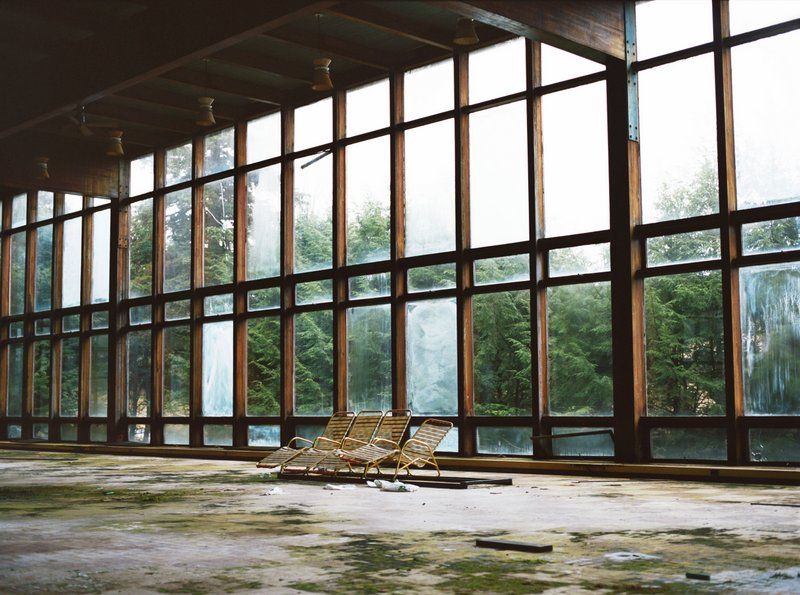
Grossinger’s Catskills Resort Hotel‘s claim to fame is an inspiration for the setting of the 1987 film Dirty Dancing, whose fictional locale “Kellerman’s” was based on a former resort. However, the film’s success was unable to influence tourists as the resort closed its doors in 1986, a year before the film’s release.
The Grossingers were Austrian immigrants who opened a farmhouse in 1914 and quickly gained a reputation for their cooking and hospitality. They then purchased the land for what would become Grossinger’s, a resort that thrived thanks to the leadership of the couple’s daughter, Jennie. Grossinger’s soon flourished into a grand destination so large it had its own airstrip and zip code, with arenas for tennis, ice skating, and skiing (it was the first resort to use artificial snow in 1952).
Frequented by athletes, entertainers, and wealthy businesses, this resort fittingly adopted the slogan “Grossinger’s Has Everything for the Kind of Person Who Likes to Come to Grossinger’s.” However, the resort today lies in ruin. Its indoor swimming pool, which has transformed into a lush greenhouse over the years, is a destination for adventurers.
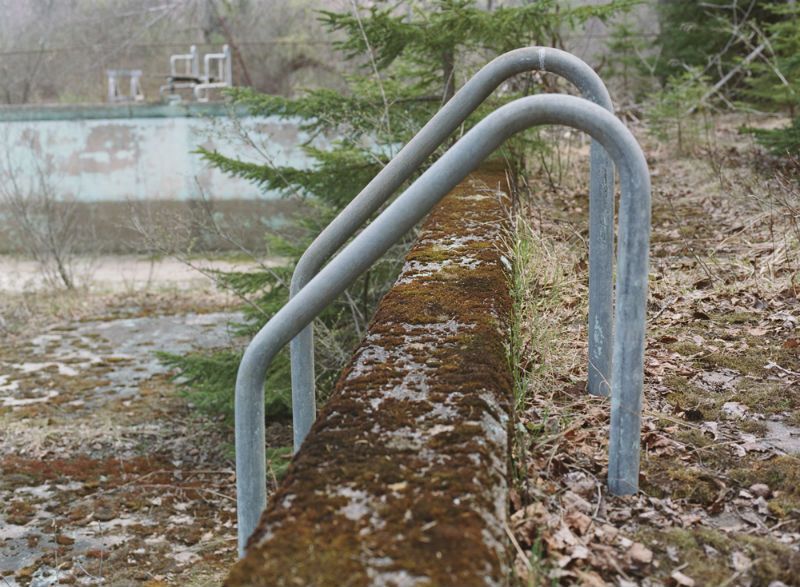
Lesser Lodge was a small resort on the outskirts of the Borscht Belt region near Livingston Manor in Sullivan Country. The lodge was constructed in 1923 and owned by Joseph and Sara Lesser. Lesser Lodge was a space for many events attended by Jewish New Yorkers and was a favorite spot for Bar Mitzvahs. The son of the owner, Alvin Lesser, wrote a book chronicling his time at the Lesser Lodge entitled “Memories of the Catskills: The Making of a Hotel.”
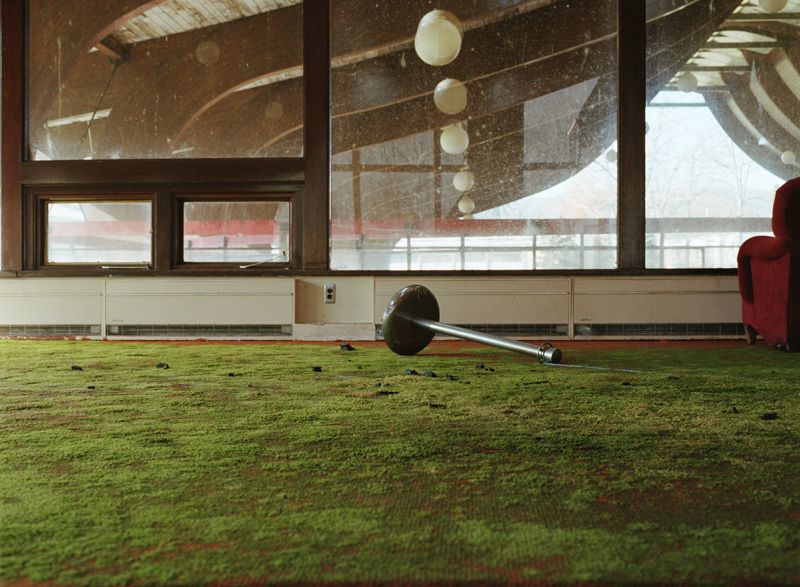
The Nevele Grand Hotel was a high-rise resort hotel in Ellenville, New York. The hotel first opened in 1901 and closed permanently in 2009. The resort was founded by Charles Slutsky, and the Slutsky family also operated the Fallsview Hotel which adjoined the Nevele Grande. The hotel was simply known as the “Nevele” until it was sold by the Slutsky family in 1997.
The Nevele Grand was well known for its impressive 18-hole golf course, which has since closed, as well as its catchy commercials with infectious jingles urging people to visit. Though the guests frequenting the resort were not as well known as those at Grossinger’s, the Nevele Grande did have one familiar face famously stay in the summer of 1966: President Lyndon B. Johnson, who was visiting the Catskills to dedicate a hospital in Ellenville.
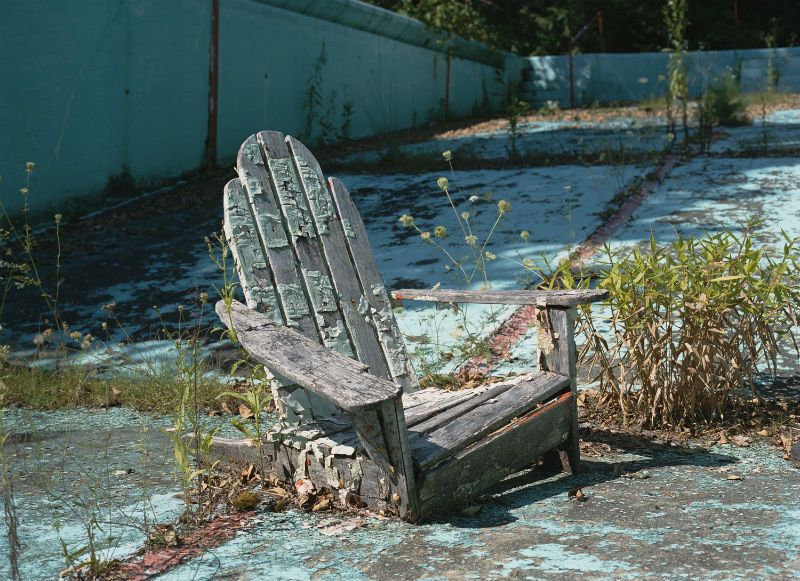
The Vegetarian Hotel in Woodridge, New York was, unsurprisingly, a hotel for those who wanted meatless alternatives. A postcard from the hotel reads “For health and pleasure. Enjoy wholesome meatless meals, health lectures, all sports, heated swimming pool, free boating, solarium, entertainment and band, folk dancing, luxurious accommodations. Special diet, spa-like atmosphere.”
The hotel was founded by Fannie Shafer, a Russian immigrant who relocated to the Catskills after her workplace burnt down in the Triangle Shirtwaist Fire, in the early 1900s. The hotel was thriving by the 1940s under her leadership and eventually the leadership of her son, Verb Konviser. The hotel closed down in the late 1980s.
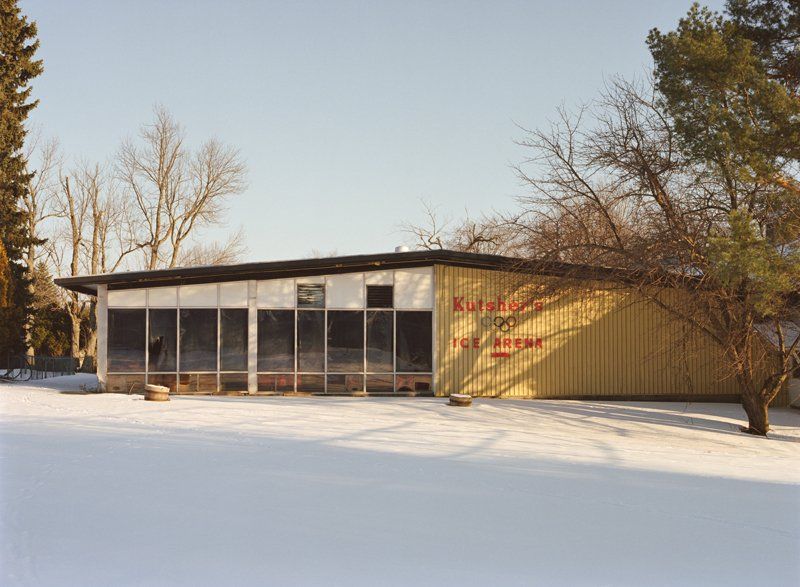
Kutsher’s Hotel in Monticello, New York, was opened by Max and Louis Kutsher in 1907 as the Kutsher Brother’s Farmhouse, and later expanded into a hotel in the 1920s. The hotel’s real expansion began in the 1950s when it became one of the premiere destinations of the Borscht Belt complete with 400 resort rooms, a golf course, and views of Kiamesha Lake.
The ballroom of Kutsher’s played host to early performances by many comedic talents such as Jerry Seinfeld and Joan Rivers. In the 1950s and 60s, the hotel also hosted basketball tournaments, and NBA great Wilt Chamberlain once worked as a bellhop there. When the hotel fell on hard times in the early 2000s, Kutsher’s welcomed the All Tomorrow’s Parties music festivals. The hotel was sold and demolished in 2014.
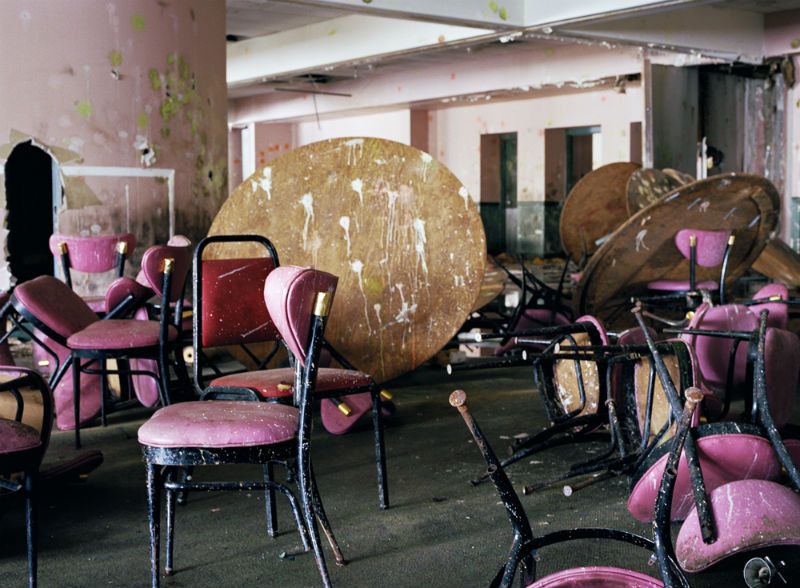
The Pines Hotel in South Fallsburg, New York was built in 1933 and was a popular destination for those who enjoyed winter sports, as it had its own ice skating rink and was a favorite spot for skiers. The Pines also featured a ballroom, bars, and a nightclub, which featured performances by comedians such as Buddy Hackett. The Pines Hotel closed its doors in 1998.
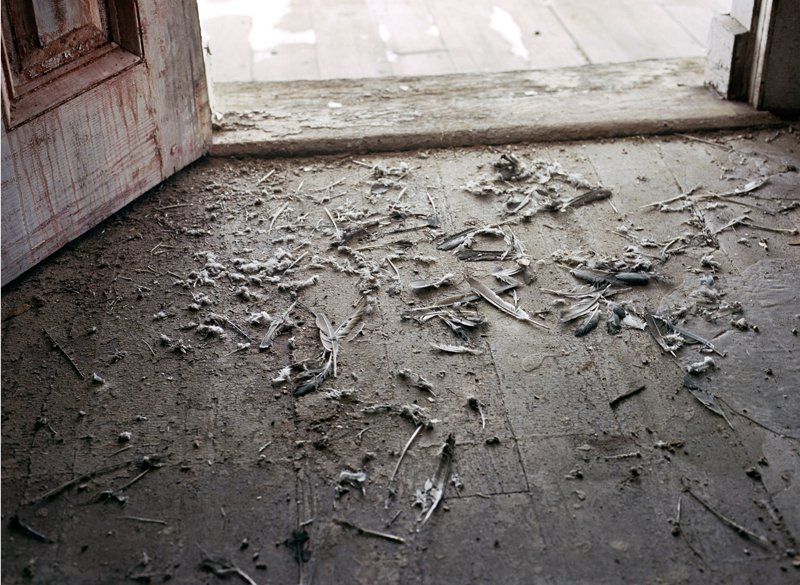
The White Lake Mansion House in Sullivan Country was established much earlier than other hotels and resorts in the region. The White Lake Mansion House was built in 1848 and was one of the first profitable hotels in the Borscht Belt region. The plans to tear down the building, which had become dilapidated beyond repair, were made in 2010, despite resistance from Sullivan County historian John Conway.
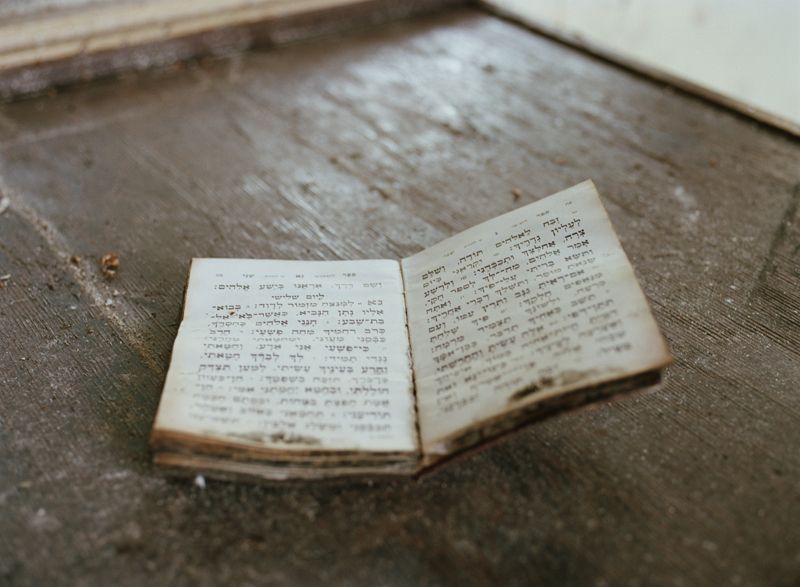
The Homowack Lodge in Spring Glen, New York was another resort that thrived in the heyday of the Borscht Belt from the 1920s to the 1960s. The lodge boasted its own bowling alley and an indoor swimming pool. The Homowack Lodge tried to find another life after the decline of the Borscht Belt as a Jewish girls day camp, but it was closed in 2009.
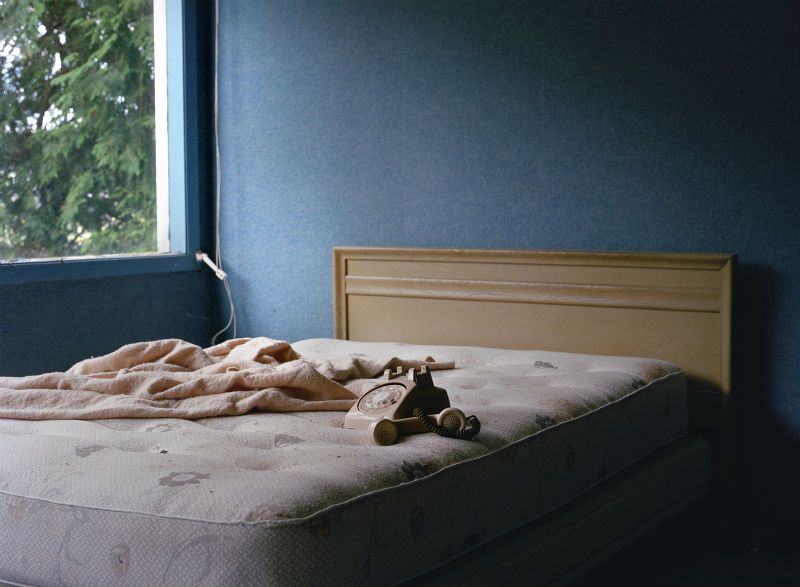
The Tamarack Lodge is Greenfield Park, New York was constructed as a small, six-room boarding house in 1903. The lodge was redone and expanded across its 400 acre property in the late 1920s, where guests could enjoy its swimming pool or golf course in the daytime, and head to its “Playtorium” in the evenings for entertainment, with performances by comedians such as Jerry Lewis and musical guests The Who. The Tamarack Lodge was plagued by two fires, one in 1994 which destroyed the majority of its rooms, and fell victim to a second in 2012 in a fire that burned down 50 structures in the area.
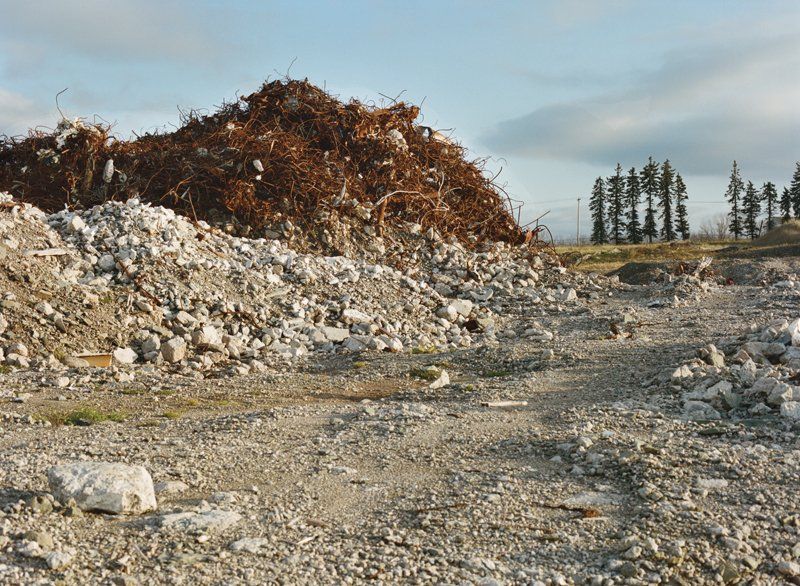
The Concord Resort Hotel, which was known as the largest resort in the Borscht Belt region, was located in Kiamesha Lake, New York. The Concord was a main competitor of Grossinger’s, expanding substantially in the 1950s to establish its signature entertainment venues, including the Cordillion Room, The Constellation Room, and the Imperial Room, which hosted comedians Jackie Mason and Buddy Hackett. The Concord Resort Hotel stayed functioning until 1998, when it was forced to close due to bankruptcy. [Update: a new complex has been built on the site – Resorts World Casino Catskills and can be seen as a filming location for the Showtime series, Billions.]
Today, the remains of the Borscht Belt resorts sit abandoned. Most hotels and establishments closed their doors in the 1980’s and 90’s, and the once heavily-inhabited structures now lie in a state of decay. Many remain abandoned and for sale, allowing anyone who wishes to venture through the buildings and photograph them.
In recent years, efforts have been made to establish a casino resort at the Borscht Belt, while other hope to return the resort, particularly Grossinger’s, to its former glory. For now, the resort at its peak of popularity still remains a distant memory as it continues to lay deserted and defaced in the Catskills.
For more abandoned locales throughout New York, check out 9 Abandoned Buildings in Upstate NY’s Lake George Region and Photos: Inside NYC’s Abandoned Fort Wadsworth on Staten Island.
Subscribe to our newsletter